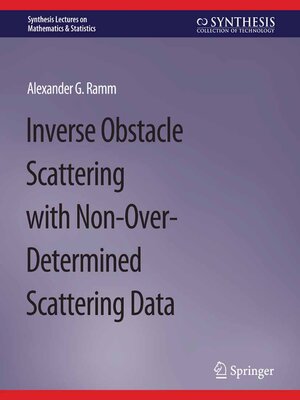Inverse Obstacle Scattering with Non-Over-Determined Scattering Data
ebook ∣ Synthesis Lectures on Mathematics & Statistics
By Alexander G. Ramm

Sign up to save your library
With an OverDrive account, you can save your favorite libraries for at-a-glance information about availability. Find out more about OverDrive accounts.
Find this title in Libby, the library reading app by OverDrive.



Search for a digital library with this title
Title found at these libraries:
| Library Name | Distance |
|---|---|
| Loading... |
The inverse obstacle scattering problem consists of finding the unknown surface of a body (obstacle) from the scattering ����(����;����;����), where ����(����;����;����) is the scattering amplitude, ����;���� ���� ����2 is the direction of the scattered, incident wave, respectively, ����2 is the unit sphere in the ℝ³ and k > 0 is the modulus of the wave vector. The scattering data is called non-over-determined if its dimensionality is the same as the one of the unknown object. By the dimensionality one understands the minimal number of variables of a function describing the data or an object. In an inverse obstacle scattering problem this number is 2, and an example of non-over-determined data is ����(����) := ����(����;����₀;����₀). By sub-index 0 a fixed value of a variable is denoted.
It is proved in this book that the data ����(����), known for all ���� in an open subset of ����2, determines uniquely the surface ���� and the boundary condition on ����. This condition can be the Dirichlet, or the Neumann, or the impedance type.
The above uniqueness theorem is of principal importance because the non-over-determined data are the minimal data determining uniquely the unknown ����. There were no such results in the literature, therefore the need for this book arose. This book contains a self-contained proof of the existence and uniqueness of the scattering solution for rough surfaces.







